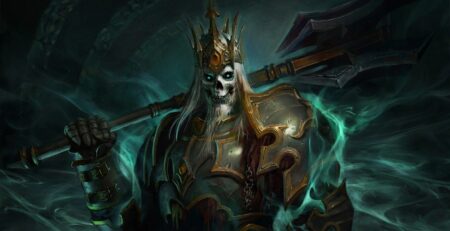Through its three seasons, That Time I Got Reincarnated As a Slime has entrenched itself as a global phenomenon. The anime has captivated audiences with its unique blend of fantasy, shonen manga elements, and profound storytelling rooted in tabletop RPG influences. At Anime Expo 2024, we sat down with producer Shinichiro Narita and manga editor Riichiro Umetsu to delve deeper into the series. We discussed the series’s cultural impact, adaptation process, thematic depth, and the delicate tone balance that defines its narrative prowess.
Riichiro Umetsu framed the series’ allure by drawing parallels with classic fantasy epics: “Essentially, starting with Lord of the Rings, many people love the fantasy genre. Adding a shonen twist to this fantasy setting was innovative.” This fusion of genres, coupled with the author’s deep-rooted passion for tabletop RPGs, crafted a world that invites immersion. The incorporation of mythology further enriches the narrative, resonating with a diverse global audience.
The journey of That Time I Got Reincarnated As a Slime began in the pages of a light novel written by Fuse. Originally serialized online in 2013, the series quickly gained popularity for its fresh take on the isekai genre. The narrative follows Satoru Mikami, an ordinary Japanese man reincarnated as a powerful slime creature named Rimuru Tempest in a world teeming with magic and mythical beings. Fuse’s intricate world-building, inspired by his love for tabletop role-playing games, established a rich backdrop that set the stage for the series adaptation into manga and anime formats.
Transitioning from page to screen poses inherent challenges in maintaining fidelity to the source material while evolving creatively to meet audience expectations. Umetsu discussed their approach: “The primary focus is always on delivering the best possible experience for readers and viewers, whether through the manga or anime.” Adaptations from the novel to manga involved nuanced character development and plot progression adjustments. These refinements, iteratively refined through feedback from the original author, culminate in an anime that enhances narrative coherence and viewer engagement.
The manga adaptation, illustrated by Taiki Kawakami, debuted in 2015, expanding the series’ reach and deepening its narrative exploration. Kawakami’s artwork not only visualizes Fuse’s imaginative world but also captures the essence of Rimuru’s transformative journey from an innocuous slime to a formidable leader influencing the destiny of nations. The manga’s success paved the way for the anime adaptation, produced by Eight Bit Studios and directed by Yasuhito Kikuchi, which premiered in 2018 to widespread acclaim.
Umetsu identified decision-making amidst adversity as a central theme: “I believe it’s about making critical decisions in challenging situations.” This thematic core underscores the characters’ journey, encapsulating the complexities of leadership and responsibility in a fantastical realm. Shinichiro Narita expanded on this, highlighting resolve and trust as pivotal: “Personally, I find it’s about resolve and determination. Freedom comes with responsibilities, sometimes necessitating tough decisions to protect friends.” Trust emerges as a crucial thread for characters navigating alliances and adversaries.
The narrative arc of That Time I Got Reincarnated As a Slime unfolds through Rimuru Tempest’s interactions with diverse characters, each contributing to the evolving dynamics of power, diplomacy, and personal growth. Rimuru’s ability to absorb and integrate the skills and personalities of others reflects not only his strategic understanding but also the series’ exploration of identity and community in a world shaped by magic and myth.
A hallmark of the series lies in its adept handling of tone, seamlessly interweaving moments of levity amidst profound narrative arcs. Umetsu acknowledged the intricacies: “It’s challenging to inject humor into battle or serious scenes without undermining the tension or altering the work’s essence.” Narita agreed, cautioning against excessive humor’s potential to disrupt emotional resonance: “Too much humor in serious moments can disrupt the mood and impact.”
The integration of humor serves to entertain and humanize characters and provide respite from the weight of their epic struggles. Rimuru’s interactions with allies like the dwarf craftsman Kaijin and the mighty dragon Veldora Tempest offer camaraderie and whimsy moments, juxtaposed against the strategic complexities of managing alliances and confronting existential threats.
As we reflect on our discussion with Shinichiro Narita and Riichiro Umetsu, their insights illuminate not only the creative processes behind That Time I Got Reincarnated As a Slime but also its enduring appeal and thematic richness. From its inception rooted in beloved fantasy traditions to its evolution across manga and anime formats, the series continues to captivate and inspire a global audience.
Our conversation at Anime Expo 2024 provided a glimpse into the collaborative spirit driving the series’ success. With themes of decision-making, trust, and the delicate interplay of seriousness and humor at its core, That Time I Got Reincarnated As a Slime exemplifies the transformative power of storytelling to resonate across cultures and captivate hearts worldwide. As Rimuru Tempest’s journey unfolds, it continues to inspire and captivate, demonstrating the enduring power of storytelling to transcend boundaries and forge connections across diverse global audiences.
That Time I Got Reincarnated As a Slime Season 3 is available to stream on Crunchyroll.
This interview was edited for length and clarity and was conducted via a translator.





